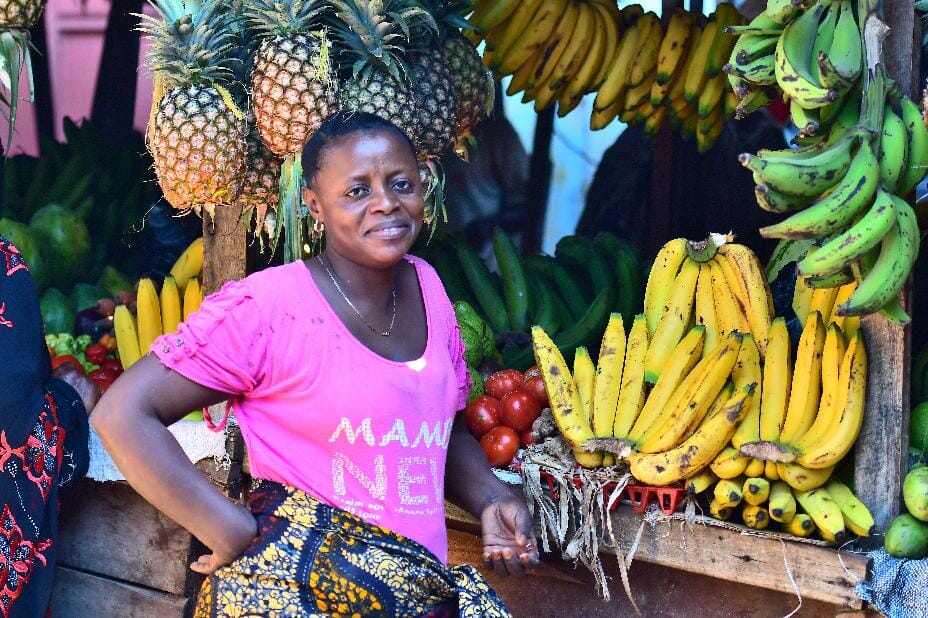Editor’s Note: The authors of this piece are Stella Nordhagen and Sofia Condés from the Global Alliance for Improved Nutrition (GAIN). GAIN is a Swiss-based foundation launched at the UN in 2002 to tackle the human suffering caused by malnutrition. Working with both governments and businesses, it aims to transform food systems so that they deliver more safe and nutritious food for all people, especially the most vulnerable to malnutrition.
Over the past two decades, as global demand for food grows, food and agriculture has become an increasingly popular investment space. As of October 2018, Valoral Advisors estimated that 530 investment funds focused on the broad food and agriculture sector had assets under management of $83 billion.
These investments, however, are unevenly distributed. The majority flows to high-income countries, and currently very little reaches the food systems of low-income regions like Africa. Moreover, virtually none goes to support highly nutritious foods—such as fruits, vegetables, and nuts—for local consumption.
Africa’s food system continues to suffer from major structural challenges and chronic underinvestment, which undermines the nutritional quality of food produced and ensures that not nearly enough of it gets from farm to fork. The result is that nutritious, safe food is not available in sufficient quantities or affordable for most people—contributing to the fact that 20% of the African population remains undernourished, even as the developed world struggles with an obesity epidemic.
One of the main reasons for the lack of investment is that Africa’s food system is predominantly made up of small- and medium-sized enterprises (SMEs), which are the source of daily food for most consumers in low- and middle-income countries. Beyond food production, these small businesses also play important roles all along the value chain, including in processing, storage, distribution and retail.
Despite 70% of the food consumed in low- and middle-income countries deriving from SMEs, few investors want to invest in them. They are often too small for micro-finance and mainstream investors, and banks shy away from them for well-documented reasons, including modest funding needs, limited collateral and short credit histories. In the agri-food sector, SMEs are also impacted by low productivity, thin profit margins and high exposure to climate risk. In short, they are labelled as ‘too risky’ for investors that find it challenging to distinguish the promising businesses from the merely high-risk ones. The IFC estimates the unmet financing need among SMEs globally as $4.5 trillion a year.
When agri-food SMEs cannot get the finance they need to grow, they cannot improve the quality, range, desirability, reach and nutritional value of their products. Beyond the impact on nutrition, this also represents a huge missed business opportunity. The Business and Sustainable Development Commission estimates that there is $165-255 billion to be made in meeting the food requirements of those emerging out of extreme poverty. Feeding Africa’s fast-growing population represents a significant market opportunity.
SMEs are also a major source of innovation. Take the problem of food waste, for example, which is estimated to cost small farmers and retailers 45% of their vegetable harvests, 35% of their fruit harvests and 25% of their incomes. Seeing the opportunity to tackle this problem, Cold Hubs, a small Nigerian company, now provides solar-powered walk-in cold rooms for 24/7 pay-as-you-go storage and preservation of perishable foods.
Through our work and studies, we are seeing a growing pipeline of dynamic and investible small businesses like Cold Hubs with ambitious plans to grow. How can we ensure that more of the private capital flowing into food and agriculture reaches the high potential, innovative SMEs increasingly found along Africa’s agri-food value chains?
In a new discussion paper, we argue that blended finance can play an important role by lowering the risk of investing in SMEs. Blended finance can bring together donors interested in improving nutrition without needing to make an investment return, development finance institutions with a higher risk tolerance, and private investors with capital and a social impact focus. The result can be catalytic de-risking of investments through a variety of mechanisms including first-loss capital or other guarantees, insurance policies, securitisation, and through direct debt and equity investments in target businesses. Another advantage of blended finance is that it is often accompanied by grant-funded technical assistance to help target companies improve technical and management skills.
To date, blended finance has mobilised about $100 billion, with renewable energy, banking, mining and communications taking the lion’s share. Agriculture funds are growing but still only account for 3% of the capital mobilised from 2000 to 2016; the majority of these do not focus on highly nutritious foods. In fact, our research shows that the SMEs receiving most funding are primarily involved in the production of foods like cocoa and coffee, which have no nutritional value for local populations.
What do we need to change to make nutritious foods a more compelling investment theme and to attract more blended finance to this space? We identify two key building blocks that need to be put in place. First, we need a clear definition of what constitutes a nutritious food and metrics that allow investors to track the social impact of their investments. Second, we need platforms capable of bridging the gap between investors and investees.
Developing standard definitions for nutritious food is not going to be easy. What is needed to achieve a healthy diet varies by age, life stage and activity level, and the nutritional value of any food can be altered for better or worse during processing. No single definition of “nutritious” can capture this complexity, but criteria are needed to help differentiate what is certainly negative for nutrition (e.g. processed meats, trans fats, sugar-sweetened beverages) from what is invariably positive (e.g. fruits, vegetables, pulses) and to delimit the space in between. To help overcome this barrier, GAIN has been working to develop clear inclusion and exclusion criteria to help guide investors in their investment decision-making.
We are also developing relevant impact metrics that work for both investors and nutrition professionals and that can capture changes in the availability, affordability accessibility and desirability of safe and nutritious foods. Our medium-term goal is to mainstream and harmonise these metrics within existing impact measurement platforms, like the Global Impact Investing Network (GIIN).
To overcome large gaps in financing platforms for SMEs in nutritious food value chains, GAIN is also looking to create more platforms capable of identifying and brokering investable deals and connecting potential investors with SMEs in nutritious food value chains. The Nutritious Foods Financing Facility (N3F) is new blended finance platform designed by GAIN to demonstrate how investment in SMEs can increase the supply and consumption of safe and nutritious foods in Sub-Saharan Africa. The N3F is expected to begin making investments in late 2020 and will support target SMEs by bundling investments with technical assistance to improve business performance and products’ nutritional content.
Taking a different approach to providing more nutritious food in developing countries in row crops, biotech startup Benson Hill is producing soy varieties with improved nutritional characteristics. Read more here.
The N3F will use donor funds for technical assistance and as first-loss catalytic capital to attract a targeted $50 million of blended sources of capital, including private investment, which will be offered to SMEs as low-interest loans. N3F will aim for positive, but below-market, returns for impact investors, made possible by the de-risking provided by donors’ contributions. Identification of eligible companies and measurement of impact potential will be done using the nutrition-focused criteria and tools being developed by GAIN.
In summary, blended finance has a key role to play in accelerating progress on reducing malnutrition worldwide. The strategic use of development finance alongside impact investment will help unlock the private capital SMEs desperately need to enable them to grow and succeed, and in the process, increase the availability and affordability of the safe and nutritious foods people and economies need to grow and thrive.
Are you innovating for more nutritious food in developing or developed markets? We’re hopeful this will be a growing trend in 2020. We want to hear from you! Email [email protected]




